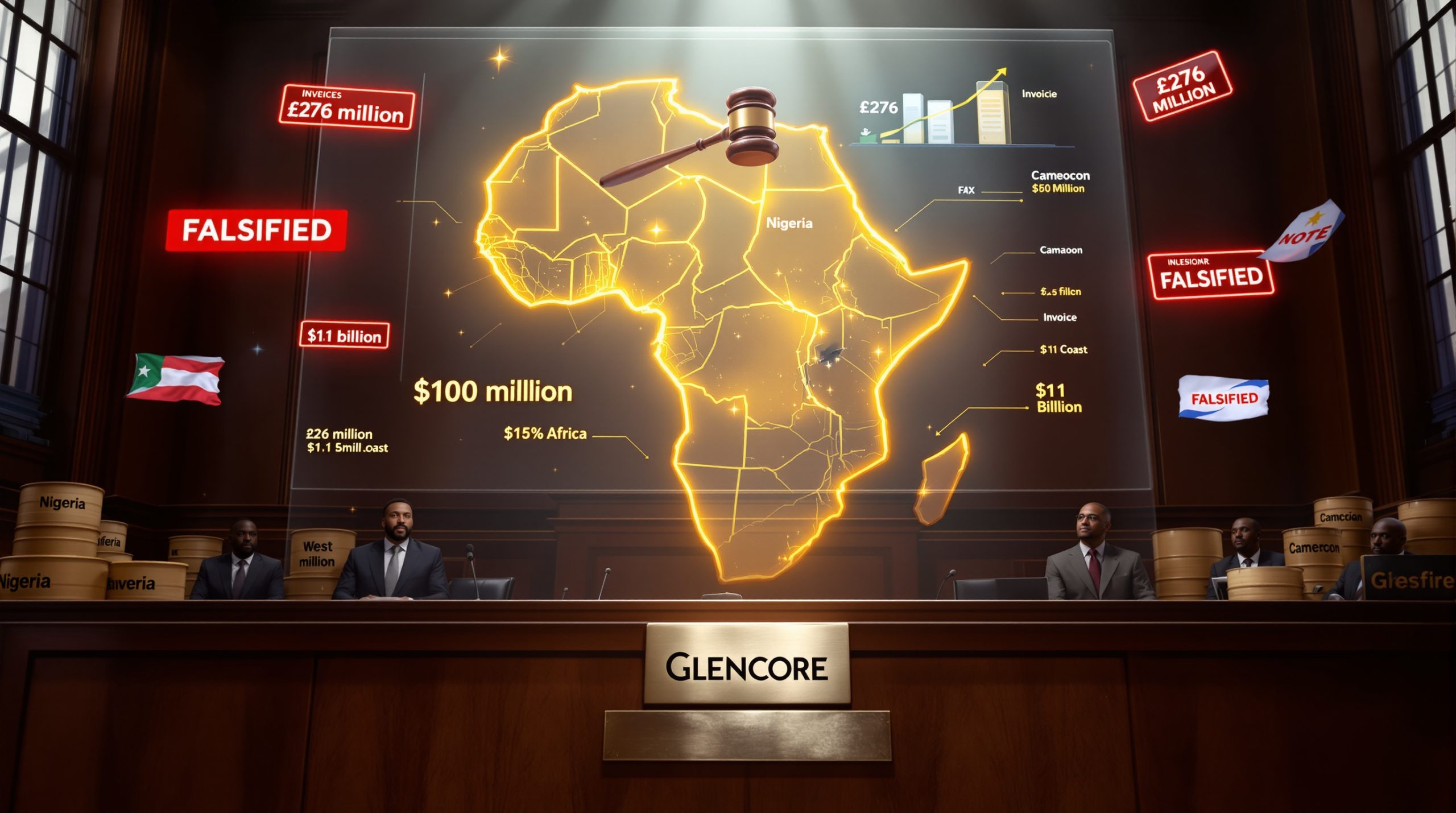What Is South Africa's Phalaborwa Rare Earths Project and Why Does It Matter?
South Africa's Phalaborwa rare earths project represents a transformative approach to critical mineral extraction, converting six decades of accumulated industrial waste into essential components for modern green technology. Situated in Limpopo province, this innovative venture demonstrates how environmental remediation can seamlessly integrate with strategic resource development.
The project stands out through its revolutionary waste-to-resource methodology, processing phosphogypsum stacks that have accumulated from 60 years of phosphate operations. Rather than pursuing traditional mining activities, the operation extracts valuable rare earth elements from existing industrial byproducts, creating a unique supply chain model that addresses both resource security and environmental legacy issues.
With a 35-million-tonne resource containing 0.44% total rare earth oxides, the project provides sufficient feedstock for a projected 16-year operational lifespan. This substantial resource base positions Phalaborwa as a significant contributor to global rare earth supply diversity, offering an alternative to conventional mining approaches. Furthermore, this initiative aligns with broader South Africa mineral beneficiation strategies that seek to maximise value from the country's mineral resources.
Why Is the Phalaborwa Project Considered Revolutionary?
The Phalaborwa operation fundamentally reimagines rare earth extraction by eliminating traditional mining stages entirely. This approach transforms what would otherwise be perpetual environmental liabilities into time-bounded economic assets, creating value from material that previously represented disposal challenges.
The project's revolutionary nature stems from its ability to process pre-concentrated rare earth material that underwent initial upgrading during historical phosphoric acid production. This pre-concentration significantly reduces the processing complexity compared to conventional hard rock operations, resulting in operating expenditure believed to be the lowest of any rare earth project in the Western Hemisphere.
Environmental Remediation Integration
The project addresses multiple environmental legacy challenges simultaneously:
• Cleanup of dormant phosphoric acid processing facilities
• Remediation of unlined gypsum waste stacks
• Rehabilitation of historical opencast mining areas
• Elimination of long-term groundwater contamination risks
This comprehensive environmental approach transforms the project from a simple extraction operation into a value-creating remediation initiative that generates economic returns while addressing historical environmental impacts. Additionally, this demonstrates how mine reclamation innovation can create new value streams whilst addressing environmental legacy issues.
What Makes This Project's Resource Profile Unique?
South Africa's Phalaborwa rare earths project delivers an exceptionally comprehensive rare earth element portfolio, encompassing both light and heavy rare earths that serve distinct technological applications. Recent confirmations have expanded the known elemental basket, with yttrium newly identified as an additional heavy rare earth element emerging from the processing operations.
Complete Elemental Spectrum
The project produces the full range of commercially significant rare earth elements:
Heavy Rare Earths:
• Dysprosium – Essential for high-temperature permanent magnets in electric vehicles and wind turbines
• Terbium – Critical component in green phosphors and advanced magnet applications
• Yttrium – Vital for LED technology, medical imaging contrast agents, and specialised phosphors
• Europium – Crucial for red phosphors in display technologies and lighting applications
• Gadolinium – Primary component in MRI contrast enhancement and neutron capture applications
• Samarium – Specialised permanent magnet applications requiring high-temperature stability
Light Rare Earths:
• Neodymium – Primary component in permanent magnets for motors and generators
• Praseodymium – Essential for magnetic and optical applications, aircraft engines
This comprehensive elemental diversity positions Phalaborwa among the few projects globally capable of supplying the complete spectrum of technology-critical rare earths from a single integrated operation. This capability is particularly valuable given the growing importance of critical minerals energy transition applications.
Strategic Element Applications
| Element Category | Primary Applications | Market Drivers |
|---|---|---|
| Heavy Rare Earths | High-performance magnets, medical imaging, advanced displays | Electric vehicle expansion, renewable energy growth |
| Light Rare Earths | Electric motor magnets, wind turbine generators | Green energy transition, consumer electronics |
| Specialised Elements | Aerospace components, defence applications | National security priorities, advanced manufacturing |
The confirmed inclusion of all identified rare earth elements as critical minerals according to November 2025 classifications enhances the strategic importance of the project for supply chain security initiatives.
How Does the Extraction Process Work?
The Phalaborwa extraction methodology employs advanced hydrometallurgical processing that bypasses conventional mining and concentration stages entirely. This integrated approach delivers separated rare earth oxides directly from the processing facility, eliminating multiple intermediate steps typical of traditional rare earth operations.
Source Material Preparation
The phosphogypsum feedstock originates from historical phosphoric acid production where phosphate slurry was treated with sulfuric acid and heat to produce phosphoric acid. During this chemical transformation, rare earth elements became concentrated in the phosphoric acid sludge, which subsequently was deposited into gypsum stacks as industrial waste.
This historical concentration process means the feedstock arrives at the extraction stage already upgraded compared to primary ore sources, reducing the processing intensity required for commercial production.
Advanced Processing Technology
Stage 1: Selective Dissolution
• Phosphogypsum stacks undergo controlled leaching processes
• Rare earth-enriched solutions are selectively extracted
• Common impurities are removed through initial purification
Stage 2: Element Separation and Purification
• Advanced hydrometallurgical techniques isolate individual elements
• Specialised separation processes distinguish heavy from light rare earths
• High-purity individual oxides are produced through refined chemical processing
Stage 3: Product Refinement and Quality Control
• Final purification achieves battery-grade and magnet-grade specifications
• Consistent quality control ensures product reliability for industrial applications
• Integrated packaging and logistics prepare materials for global distribution
Technical Validation and Research Support
South African state-owned research organisation Mintek has been instrumental in enabling commercial extraction methodology development from phosphogypsum feedstock. Laboratory testing conducted in September and October demonstrated successful optimisation of exceptionally pure rare earth products, with ongoing testwork confirming additional element recovery pathways.
This institutional research support validates the technical feasibility and commercial scalability of the processing approach, providing confidence in the methodology's long-term viability. Moreover, the project exemplifies how data-driven mining operations can revolutionise traditional extraction methodologies.
What Are the Economic Fundamentals?
The Phalaborwa project demonstrates compelling economic fundamentals anchored by a base case net present value of $611 million according to the updated interim economic study released in December 2024. These robust economics stem from the elimination of traditional mining costs and the utilisation of existing infrastructure advantages.
Financial Performance Metrics
| Economic Indicator | Value | Competitive Advantage |
|---|---|---|
| Base Case NPV | $611 million | Strong investment returns with reduced capital requirements |
| Project Lifespan | 16 years | Extended production timeline providing revenue stability |
| Operating Expenditure | Industry-leading low costs | Elimination of mining and concentration expenses |
| Resource Base | 35 million tonnes | Substantial feedstock ensuring operational continuity |
The project's economic strength derives from its unique cost structure that eliminates several major expense categories inherent to conventional rare earth mining operations.
Cost Structure Advantages
Eliminated Expenses:
• Overburden removal and waste rock handling operations
• Ore crushing and grinding infrastructure requirements
• Traditional mining equipment and associated maintenance
• Tailings dam construction and ongoing management
• Long-distance ore transportation from remote mining locations
Infrastructure Leverage:
• Ready-fenced site boundaries reducing security and development costs
• Existing power infrastructure and high-voltage switchyard capacity
• Established road access and proximity to transportation networks
• Available water resources and processing facility foundations
Revenue Diversification Strategy
The project's multi-element portfolio provides natural revenue hedging through exposure to different rare earth market segments. Heavy rare earths typically command premium pricing due to supply constraints and specialised applications, while light rare earths offer volume-based revenue stability through broader market demand.
The company plans to incorporate the value contribution of the full range of strategic rare earths into the economic model during the definitive feasibility study phase, maximising revenue potential from the comprehensive elemental basket.
This comprehensive approach contrasts with projects that calculate economics based primarily on major elements while treating additional rare earths as byproduct credits.
How Does This Address Global Supply Chain Challenges?
South Africa's Phalaborwa rare earths project emerges at a critical juncture in global rare earth supply chain evolution, offering strategic diversification away from concentrated production sources. With China controlling over 60% of global rare earth output, the project represents a significant Western Hemisphere supply alternative with important geopolitical implications.
Supply Security Benefits
Geographic Diversification:
• Reduced dependency on single-country supply sources
• Alternative sourcing options for critical technology manufacturers
• Strategic reserve potential for allied nations and trading partners
• Ethical sourcing credentials supporting responsible supply chain initiatives
Market Timing Advantages:
• Accelerating electric vehicle adoption driving magnet-grade rare earth demand
• Wind energy expansion requiring high-performance permanent magnet materials
• Defence and aerospace applications seeking secure, reliable supply chains
• Consumer electronics maintaining steady consumption across multiple rare earth elements
Technology Demand Drivers
The project's comprehensive elemental portfolio aligns with expanding technology applications requiring rare earth materials:
Transportation Sector:
• Electric vehicle motors requiring neodymium and praseodymium magnets
• Hybrid vehicle systems utilising dysprosium for high-temperature stability
• Advanced air mobility platforms demanding lightweight, high-performance components
Energy Infrastructure:
• Wind turbine generators incorporating permanent magnet technology
• Grid-scale energy storage systems requiring specialised rare earth components
• Solar panel manufacturing utilising various rare earth elements
Advanced Technology Applications:
• Robotics systems requiring precision motor control and sensing capabilities
• Medical imaging equipment utilising gadolinium-based contrast agents
• Smartphone and laptop manufacturing consuming multiple rare earth elements
What Environmental Benefits Does the Project Deliver?
The Phalaborwa project transforms environmental liabilities into economic assets while simultaneously addressing multiple legacy contamination issues. This approach represents a paradigm shift from traditional mining's environmental impact profile to remediation-based resource development.
Legacy Remediation Scope
Comprehensive Site Cleanup:
• Processing and removal of 150,000 tonnes of accumulated phosphogypsum waste
• Remediation of two unlined, environmentally hazardous gypsum stacks
• Cleanup of dormant phosphoric acid processing facilities
• Rehabilitation of historical opencast mining areas
Environmental Risk Reduction:
• Elimination of long-term groundwater contamination potential
• Reduction of airborne dust generation from exposed waste surfaces
• Prevention of chemical leaching from uncontrolled waste storage
• Conversion of industrial wasteland into productive economic activity
Resource Efficiency Improvements
The waste-to-resource approach delivers significant environmental advantages compared to conventional rare earth mining operations:
Reduced Environmental Footprint:
• Minimised freshwater consumption through closed-loop processing systems
• Elimination of new mining disturbance and habitat destruction
• Reduced chemical reagent requirements due to pre-concentrated feedstock
• Lower overall energy intensity compared to hard-rock mining and concentration
Carbon Emission Benefits:
• Avoided emissions from traditional mining equipment and operations
• Reduced transportation impacts through existing infrastructure utilisation
• Elimination of overburden handling and waste rock management emissions
• Lower processing energy requirements due to pre-concentrated material
When Will Production Begin and What Are the Development Milestones?
South Africa's Phalaborwa rare earths project follows an accelerated development timeline compared to conventional rare earth mining operations, benefiting from eliminated mining phases and existing infrastructure advantages. The streamlined development approach targets commercial production within a compressed timeframe, reflecting broader trends in mining industry evolution toward more efficient project delivery.
Development Timeline Overview
| Development Phase | Timeline | Key Activities |
|---|---|---|
| Advanced Studies | 2025 | Definitive feasibility study completion, environmental permitting |
| Construction Phase | 2026-2027 | Processing plant construction, equipment installation |
| Production Ramp-up | 2027-2029 | Initial production, capacity optimisation, full-scale operations |
2025 Development Activities:
• Definitive feasibility study completion incorporating full elemental value
• Environmental impact assessment finalisation and regulatory approvals
• Financing arrangements and strategic partnership development
• Detailed engineering design and equipment procurement planning
2026-2027 Construction Phase:
• Hydrometallurgical processing plant construction commencement
• Infrastructure upgrades and utility system integration
• Specialised equipment installation and system commissioning
• Workforce development and technical training programmes
2027-2029 Production Implementation:
• Initial rare earth oxide production expected in Q4 2027
• Systematic capacity increases through operational optimisation
• Achievement of design production rates by 2029
• Long-term operational refinement and efficiency improvements
Accelerated Development Advantages
The project's development timeline significantly outpaces conventional rare earth operations due to several inherent advantages:
• Eliminated mining permitting processes that typically require years of regulatory approval
• Existing infrastructure utilisation reducing construction and development time
• Simplified environmental assessment focused on remediation rather than new disturbance
• Pre-concentrated feedstock eliminating complex ore processing facility requirements
How Does This Impact South Africa's Mining Sector?
The Phalaborwa rare earths project represents a transformative development for South Africa's mining industry, demonstrating innovative approaches to resource extraction while creating substantial economic opportunities. The project establishes new precedents for waste-to-resource development that could influence mining practices across multiple commodity sectors.
Economic Development Contributions
Direct Economic Impact:
• Substantial tax and royalty revenue generation for government budgets
• High-skilled employment creation in rural Limpopo province communities
• Foreign exchange earnings supporting currency stability
• Technology transfer and specialised capability development
Industry Transformation Potential:
• Establishment of South Africa as a strategic rare earths production hub
• Attraction of downstream processing and value-addition investments
• Development of specialised technical expertise and research capabilities
• Creation of replicable models for similar waste-to-resource projects
Strategic Sector Positioning
The project positions South Africa as a key player in critical minerals supply chains, enhancing the country's strategic importance in global technology supply networks. This positioning supports broader economic development objectives while contributing to international supply chain diversification initiatives.
Competitive Advantages:
• Comprehensive rare earth elemental portfolio from single operation
• Cost-competitive production through innovative processing methods
• Ethical sourcing credentials supporting responsible supply chain requirements
• Established mining sector expertise and regulatory frameworks
What Challenges and Risks Should Investors Consider?
While the Phalaborwa project offers compelling advantages, investors should carefully evaluate several risk categories that could influence project performance and investment returns.
Technical and Operational Considerations
Process Technology Risks:
• Scaling laboratory-validated processes to full commercial production volumes
• Maintaining consistent product quality specifications across diverse rare earth elements
• Managing feedstock variability within historical phosphogypsum deposits
• Ensuring reliable separation efficiency for individual rare earth elements
Operational Complexity:
• Coordinating integrated processing of multiple rare earth elements simultaneously
• Managing specialised chemical processing requirements for different element grades
• Maintaining environmental compliance throughout waste processing operations
• Developing skilled workforce capabilities for advanced hydrometallurgical operations
Market and Commercial Factors
Price Volatility Exposure:
• Rare earth element prices subject to significant market fluctuations
• Individual element pricing cycles may not align with overall market trends
• Competition from established Chinese producers with different cost structures
• Long-term contract negotiation challenges with technology manufacturers
Market Development Requirements:
• Customer qualification processes for new rare earth supply sources
• Product certification requirements for specific end-use applications
• Logistics and distribution network development for global market access
• Regulatory compliance across multiple international jurisdictions
Environmental and Social Considerations
Stakeholder Management:
• Community engagement and social licence maintenance in rural areas
• Environmental monitoring and reporting obligations throughout operations
• Water usage management and discharge permit compliance
• Long-term site rehabilitation and closure planning responsibilities
Regulatory Environment:
• Evolving rare earth export and import regulations across key markets
• Environmental permitting requirements for waste processing operations
• Health and safety compliance for specialised chemical processing activities
• Potential changes in critical minerals designation and associated policies
How Does Phalaborwa Compare to Other Global Rare Earth Projects?
South Africa's Phalaborwa rare earths project offers distinct competitive advantages compared to conventional rare earth developments, particularly in development timeline, capital intensity, and environmental impact profiles.
Comparative Project Analysis
| Project Characteristic | Phalaborwa Approach | Traditional Hard-Rock Projects |
|---|---|---|
| Development Timeline | 3-4 years from financing to production | 7-10 years typical development period |
| Capital Requirements | Moderate investment due to existing infrastructure | Very high capital intensity for mining operations |
| Environmental Profile | Positive remediation impact | Significant new environmental disturbance |
| Element Diversity | Complete rare earth spectrum | Often limited to specific element focus |
| Operational Risk | Moderate processing complexity | High geological and mining risks |
| Regulatory Approval | Streamlined permitting process | Extensive environmental and mining permits |
Unique Competitive Positioning
Speed-to-Market Advantages:
The elimination of traditional mining phases enables accelerated project development, providing earlier market entry compared to greenfield operations. This timing advantage becomes increasingly valuable as rare earth demand continues expanding across multiple technology sectors. Furthermore, industry analysis reveals that the Phalaborwa rare earths project demonstrates exceptional potential for rapid commercialisation compared to conventional developments.
Cost Structure Benefits:
Operating expenditure advantages stem from eliminated mining costs, existing infrastructure utilisation, and reduced processing complexity due to pre-concentrated feedstock. These cost benefits provide margin protection during market volatility periods.
Environmental Differentiation:
The project's remediation-based approach contrasts sharply with conventional mining's environmental impact profile, supporting responsible sourcing initiatives and environmental, social, and governance investment criteria.
What Role Will Technology Play in Project Success?
Advanced processing technologies and digital integration capabilities represent critical success factors for maximising the Phalaborwa project's operational efficiency and economic performance.
Processing Technology Innovation
Hydrometallurgical Advancement:
• Continuous optimisation of rare earth separation processes for maximum recovery
• Real-time quality monitoring ensuring consistent product specifications
• Automated process control systems reducing operational costs and human error
• Predictive maintenance technologies minimising processing downtime
Product Quality Enhancement:
Laboratory testwork has demonstrated successful optimisation of exceptionally pure rare earth products, with ongoing development confirming additional element recovery pathways. These advances support premium product positioning and enhanced market acceptance.
Digital Integration Opportunities
Operational Efficiency:
• Remote monitoring and control capabilities reducing on-site staffing requirements
• Data analytics optimising recovery rates across multiple rare earth elements
• Supply chain integration systems coordinating with customer requirements
• Environmental monitoring automation ensuring regulatory compliance
Market Responsiveness:
Advanced process control enables flexible production adjustments responding to market demand variations across different rare earth elements, maximising revenue optimisation through dynamic production planning.
What Are the Broader Implications for Critical Mineral Security?
The Phalaborwa project contributes significantly to global critical mineral security initiatives by providing diversified rare earth supply sources outside traditional production centres. This strategic contribution extends beyond commercial considerations to encompass national security and economic resilience implications.
Supply Chain Diversification Impact
Strategic Resource Security:
• Reduced dependence on concentrated rare earth production sources
• Enhanced supply resilience for critical technology applications
• Alternative sourcing options supporting industrial and defence requirements
• Contribution to ally and partner nation resource security objectives
Policy Alignment Benefits:
• Support for renewable energy deployment through secure magnet material supply
• Enhancement of electric vehicle adoption through reliable rare earth availability
• Contribution to national security through diversified defence material sources
• Economic development opportunities in developing regions through responsible mining
Innovation Model Implications
The project's waste-to-resource approach could catalyse similar initiatives globally, transforming how the mining industry addresses both resource development and environmental legacy issues. This model demonstrates potential for converting historical industrial waste into strategic resource assets. According to recent developments, South African research institutions have validated the technical viability and commercial potential of this innovative approach.
Replication Potential:
• Application to other industrial waste streams containing valuable materials
• Integration of environmental remediation with resource extraction economics
• Development of specialised processing technologies for waste-based feedstocks
• Creation of sustainable mining practices addressing legacy environmental issues
The success of the Phalaborwa model could establish new standards for responsible resource development while addressing critical mineral supply security challenges faced by technology-dependent economies worldwide.
Investment decisions should be based on comprehensive due diligence and professional financial advice. Rare earth markets are subject to significant volatility, and mining projects involve inherent technical, operational, and market risks that could affect investment outcomes. This analysis is based on publicly available information and should not be considered as investment advice or recommendations.
Ready to Discover the Next Major ASX Mineral Breakthrough?
Just as South Africa's Phalaborwa project demonstrates the transformative potential of innovative resource extraction, the ASX regularly features similar discoveries that can generate substantial market returns. Discovery Alert's proprietary Discovery IQ model instantly identifies significant ASX mineral discoveries across all commodities, delivering real-time alerts that help investors capitalise on breakthrough announcements before they gain broader market attention. Begin your 30-day free trial today to position yourself ahead of the next major discovery opportunity.




